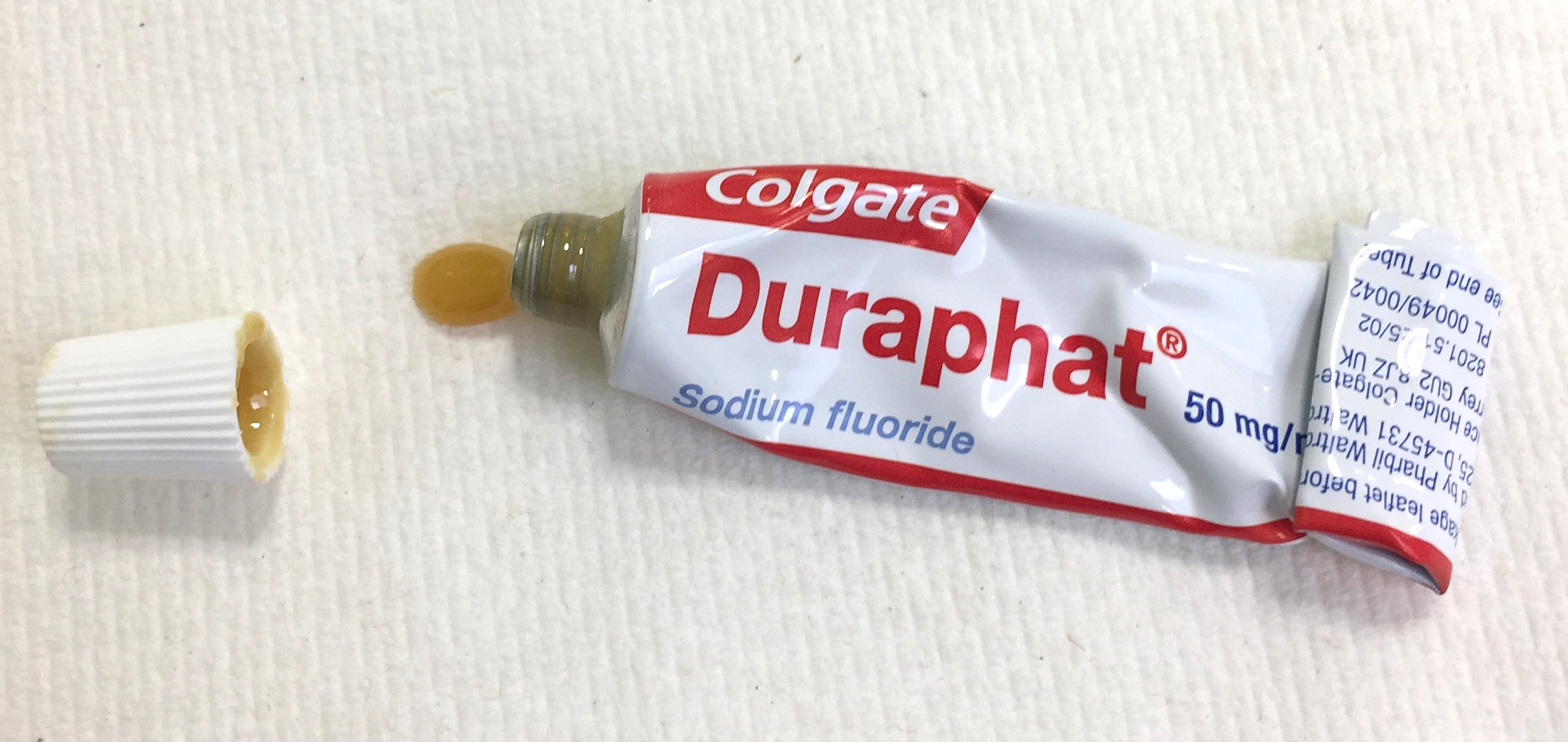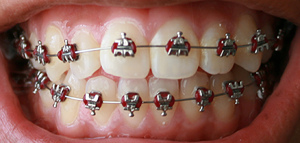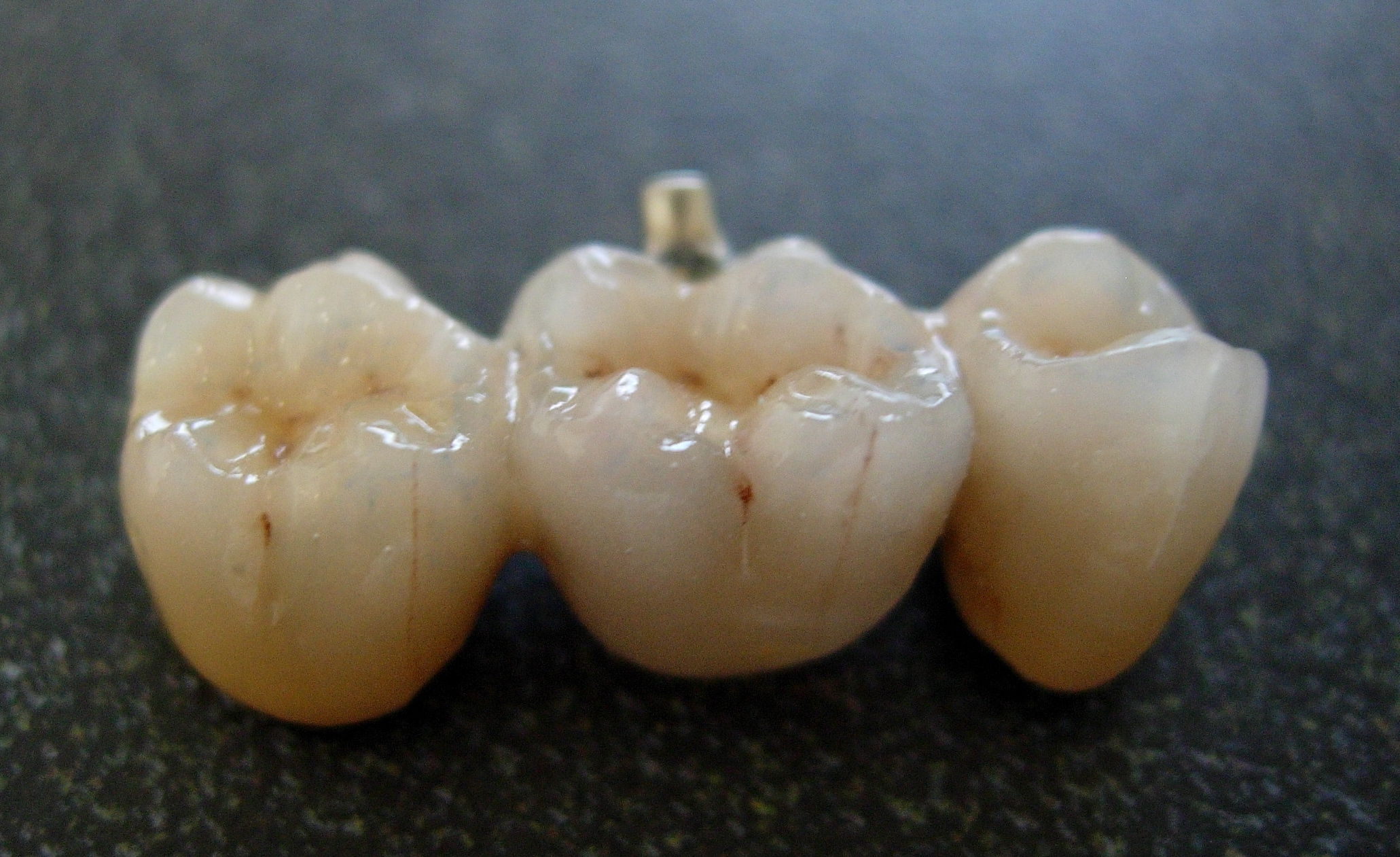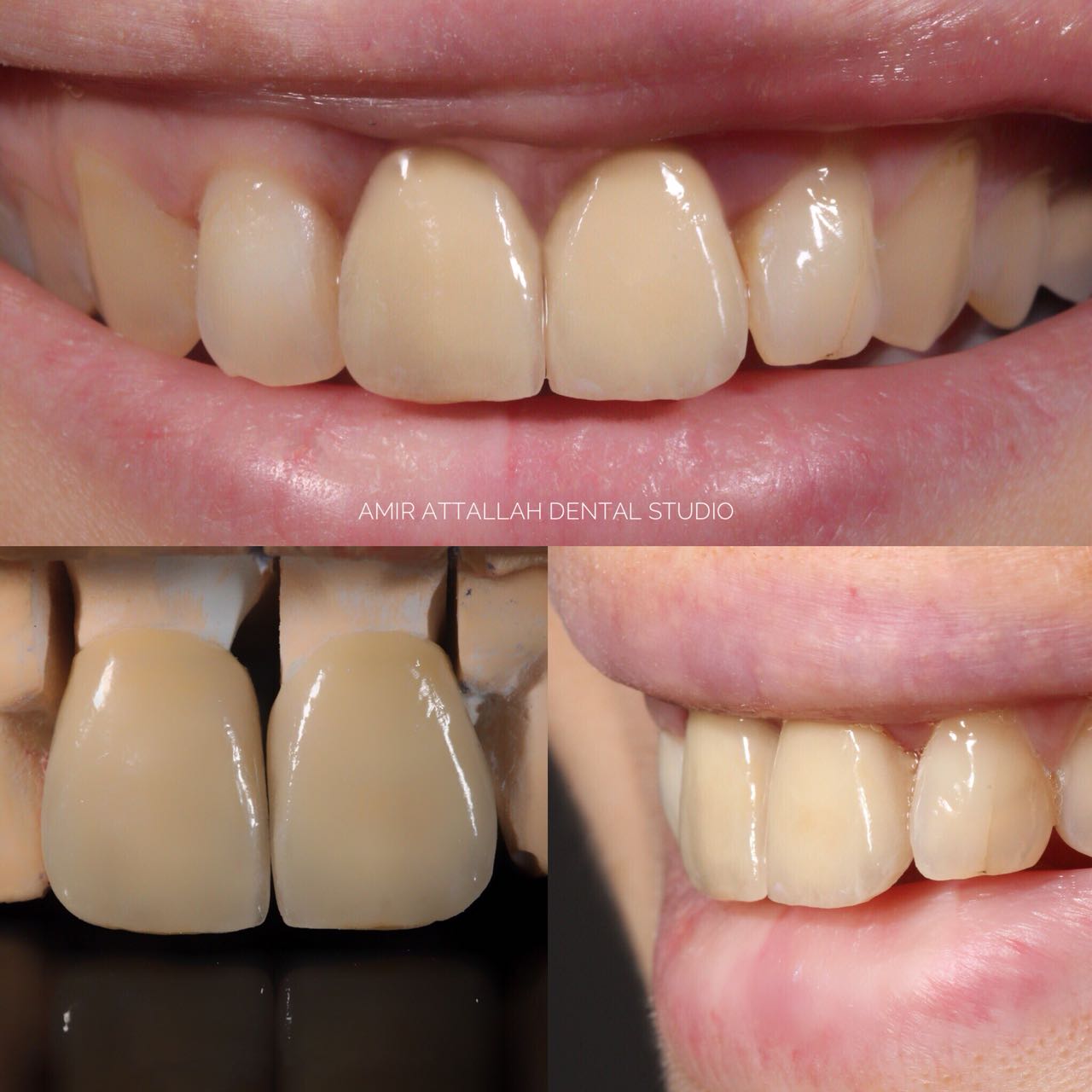|
Dental Auxiliary
A dental auxiliary is any oral health practitioner other than a dentist & dental hygienist, including the supporting team assisting in dental treatment. They include dental assistants (known as dental nurses in the United Kingdom and Ireland), dental therapists and oral health therapists, dental technologists, and orthodontic auxiliaries. The role of dental auxiliaries is usually set out in regional dental regulations, defining the treatment that can be performed. Dental assistants Dental assistant help make dental treatment more efficient by assisting the clinician. They hold and pass instruments, retract tissues and apply suction to assist better vision of the operating field. They also mix materials, help maintain dental records, and sterilize instruments and equipment. Some also engage in professional teeth whitening procedures, particularly in The Republic of Ireland where laser teeth whitening is classified as a cosmetic procedure and not dental treatment. This practice us ... [...More Info...] [...Related Items...] OR: [Wikipedia] [Google] [Baidu] |
Dentist
A dentist, also known as a dental surgeon, is a health care professional who specializes in dentistry (the diagnosis, prevention, management, and treatment of diseases and conditions of the mouth, oral cavity and other aspects of the craniofacial complex including the temporomandibular joint). The dentist's Dental auxiliary, supporting team aids in providing oral health services. The dental team includes dental assistants, dental hygienists, dental technicians, and sometimes dental therapists. History Middle Ages In China as well as France, the first people to perform dentistry were barbers. They have been categorized into 2 distinct groups: guild of barbers and lay barbers. The first group, the Guild of Barbers, was created to distinguish more educated and qualified dental surgeons from lay barbers. Guild barbers were trained to do complex surgeries. The second group, the lay barbers, were qualified to perform regular hygienic services such as shaving and tooth extraction as w ... [...More Info...] [...Related Items...] OR: [Wikipedia] [Google] [Baidu] |
Fluoride Varnish
Fluoride varnish is a highly concentrated form of fluoride which is applied to the tooth's surface, by a dentist, dental hygienist or other health care professional, as a type of topical fluoride therapy. It is not a permanent varnish but due to its adherent nature it is able to stay in contact with the tooth surface for several hours. It may be applied to the enamel, dentine or cementum of the tooth and can be used to help prevent decay, remineralise the tooth surface and to treat dentine hypersensitivity. There are more than 30 fluoride-containing varnish products on the market today, and they have varying compositions and delivery systems. These compositional differences lead to widely variable pharmacokinetics, the effects of which remain largely untested clinically. Fluoride varnishes are relatively new in the United States, but they have been widely used in western Europe, Canada, South Africa and the Scandinavian countries since the 1980s as a dental caries prevention th ... [...More Info...] [...Related Items...] OR: [Wikipedia] [Google] [Baidu] |
Dental Braces
Dental braces (also known as braces, orthodontic cases, or cases) are devices used in orthodontics that align and straighten teeth and help position them with regard to a person's bite, while also aiming to improve dental health. They are often used to correct underbites, as well as malocclusions, overbites, open bites, gaps, deep bites, cross bites, crooked teeth, and various other flaws of the teeth and jaw. Braces can be either cosmetic or structural. Dental braces are often used in conjunction with other orthodontic appliances to help widen the palate or jaws and to otherwise assist in shaping the teeth and jaws. Process The application of braces moves the teeth as a result of force and pressure on the teeth. There are traditionally four basic elements used: brackets, bonding material, arch wire, and ligature elastic (also called an “O-ring”). The teeth move when the arch wire puts pressure on the brackets and teeth. Sometimes springs or rubber bands are used to put ... [...More Info...] [...Related Items...] OR: [Wikipedia] [Google] [Baidu] |
Elastics (orthodontics)
Elastics are rubber bands frequently used in the field of orthodontics to correct different types of malocclusions. The elastic wear is prescribed by an orthodontist or a dentist in an orthodontic treatment. The longevity of the elastic wear may vary from two weeks to several months. The elastic wear can be worn from 12 to 23 hours a day, either during the night or throughout the day depending on the requirements for each malocclusion. The many different types of elastics may produce different forces on teeth. Therefore, using elastics with specific forces is critical in achieving a good orthodontic occlusion. The term ''intermaxillary elastics'' is used when elastics can go from the maxillary to the mandibular arch. ''Intra-maxillary elastics'' are elastics used in one arch only, either mandibular or maxillary. People using elastics for orthodontic correction change their elastics three to four times during the day. Elastic wear is recommend to be used in a rectangular wire to mini ... [...More Info...] [...Related Items...] OR: [Wikipedia] [Google] [Baidu] |
Orthodontic Archwire
An archwire in orthodontics is a wire conforming to the alveolar or dental arch that can be used with dental braces as a source of force in correcting irregularities in the position of the tooth, teeth. An archwire can also be used to maintain existing dental positions; in this case it has a Retainer (orthodontic device), retentive purpose. Orthodontic archwires may be fabricated from several alloys, most commonly stainless steel, Nickel titanium, nickel-titanium alloy (NiTi), and beta-titanium alloy (composed primarily of titanium and molybdenum). Types Noble Metal alloy Noble metals such as gold, platinum, iridium, silver and their alloys were used early on in the field of Orthodontics because of their good corrosion resistance. Some of the other qualities that these alloys had were high ductility, variable stiffness (with heat), high resilience and ease of soldering. Disadvantages of these alloys were: Less elasticity, less tensile strength and greater cost. Composition ... [...More Info...] [...Related Items...] OR: [Wikipedia] [Google] [Baidu] |
Orthodontics
Orthodontics is a dentistry specialty that addresses the diagnosis, prevention, management, and correction of mal-positioned teeth and jaws, and misaligned bite patterns. It may also address the modification of facial growth, known as dentofacial orthopedics. Abnormal alignment of the teeth and jaws is very common. Nearly 50% of the developed world's population, according to the American Association of Orthodontics, has malocclusions severe enough to benefit from orthodontic treatment: although this figure decreases to less than 10% according to the same AAO statement when referring to medically necessary orthodontics. However, conclusive scientific evidence for the health benefits of orthodontic treatment is lacking, although patients with completed orthodontic treatment have reported a higher quality of life than that of untreated patients undergoing orthodontic treatment. Treatment may require several months to a few years, and entails using dental braces and other appliances t ... [...More Info...] [...Related Items...] OR: [Wikipedia] [Google] [Baidu] |
Denturist
A denturist in the United States and Canada, clinical dental technologist in the United Kingdom and Ireland, dental prosthetist in Australia, or a clinical dental technician in New Zealand is a member of the oral health care team and role as primary oral health care provider who provides an oral health examination, planning treatment, takes impressions of the surrounding oral tissues, constructs and delivers removable oral prosthesis treatment (including dentures and partial dentures) directly to the patient. Definitions Denturism is defined as the practice by denturists of examining oral health, planning treatment, making artificial dentures including other removable oral appliances and fitting them to patients. It is a recognized profession throughout the world and currently utilized in many countries including Australia, New Zealand, United States, United Kingdom and Canada. In the United States, denturism is only legislated and practiced in 7 states (Maine, Arizona, Idaho ... [...More Info...] [...Related Items...] OR: [Wikipedia] [Google] [Baidu] |
Bridge (dentistry)
A bridge is a fixed dental restoration (a fixed dental prosthesis) used to replace one or more missing teeth by joining an artificial tooth definitively to adjacent teeth or dental implants. Definitions Fixed bridge: A dental prosthesis that is definitively attached to natural teeth and replaces missing teeth. Abutment: The tooth that supports and retains a dental prosthesis. Pontic: The artificial tooth that replaces a missing natural tooth. Retainer: The component attached to the abutment for retention of the prosthesis. Retainers can be major or minor. Unit: Pontics and abutment teeth are referred to as units. The total number of units in a bridge is equal to the number of pontics plus the number of abutment teeth. Saddle: The area on the alveolar ridge which is edentulous where at least one missing tooth is to be reinstated. Connector: Joins the pontic to the retainer or two retainers together. Connectors may be fixed or movable. Span: The length of the alveolar rid ... [...More Info...] [...Related Items...] OR: [Wikipedia] [Google] [Baidu] |
Crown (dentistry)
In dentistry, a crown most commonly refers to a dental cap, a type of dental restoration that completely caps or encircles a tooth or dental implant. A crown may be needed when a large cavity threatens the health of a tooth. A crown is typically bonded to the tooth by dental cement. They can be made from various materials, which are usually fabricated using ''indirect methods''. Crowns are used to improve the strength or appearance of teeth and to halt deterioration. While beneficial to dental health, the procedure and materials can be costly. The most common method of crowning a tooth involves taking a dental impression of a tooth prepared by a dentist, then fabricating the crown outside of the mouth. The crown can then be inserted at a subsequent dental appointment. This ''indirect method'' of tooth restoration allows use of strong restorative material requiring time-consuming fabrication under intense heat, such as casting metal or firing porcelain, that would not be possib ... [...More Info...] [...Related Items...] OR: [Wikipedia] [Google] [Baidu] |
Fixed Prosthodontics
Fixed prosthodontics is the area of prosthodontics focused on permanently attached (fixed) dental prostheses. Such dental restorations, also referred to as indirect restorations, include crowns, bridges (fixed dentures), inlays, onlays, and veneers. Prosthodontists are specialist dentists who have undertaken training recognized by academic institutions in this field. Fixed prosthodontics can be used to restore single or multiple teeth, spanning areas where teeth have been lost. In general, the main advantages of fixed prosthodontics when compared to direct restorations is the superior strength when used in large restorations, and the ability to create an aesthetic looking tooth. As with any dental restoration, principles used to determine the appropriate restoration involves consideration of the materials to be used, extent of tooth destruction, orientation and location of tooth, and condition of neighboring teeth. A good source of information about this subject can be found at ... [...More Info...] [...Related Items...] OR: [Wikipedia] [Google] [Baidu] |
Retainer (orthodontics)
Orthodontic retainers are custom-made devices, usually made of wires or clear plastic, that hold teeth in position after surgery or any method of realigning teeth. Once a phase of orthodontic treatment has been completed to straighten teeth, there remains a lifelong risk of relapse (a tendency for teeth to return to their original position) due to a number of factors: recoil of periodontal fibres, pressure from surrounding soft tissues, the occlusion and patient’s continued growth and development. By using retainers to hold the teeth in their new position for a length of time, the surrounding periodontal fibres adapt to changes in the bone which can help minimize any changes to the final tooth position after the completion of orthodontic treatment. Retainers may also be used to treat overjets. Removable retainers Removable retainers include Hawley, Vacuum-formed, Begg and Barrer. They provide orthodontic retention when worn and they can be taken in and out of the mouth. They ... [...More Info...] [...Related Items...] OR: [Wikipedia] [Google] [Baidu] |
Dentures
Dentures (also known as false teeth) are prosthetic devices constructed to replace missing teeth, and are supported by the surrounding soft and hard tissues of the oral cavity. Conventional dentures are removable (removable partial denture or complete denture). However, there are many denture designs, some which rely on bonding or clasping onto teeth or dental implants (fixed prosthodontics). There are two main categories of dentures, the distinction being whether they are used to replace missing teeth on the mandibular arch or on the maxillary arch. Medical uses Dentures do not feel like real teeth, nor do they function like real teeth. Dentures can help people through: * Mastication or chewing ability is improved by replacing edentulous areas with denture teeth. * Aesthetics, because the presence of teeth gives a natural appearance to the face, and wearing a denture to replace missing teeth provides support for the lips and cheeks and corrects the collapsed appearance that ... [...More Info...] [...Related Items...] OR: [Wikipedia] [Google] [Baidu] |








